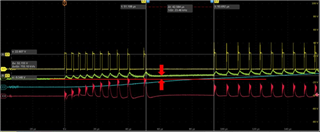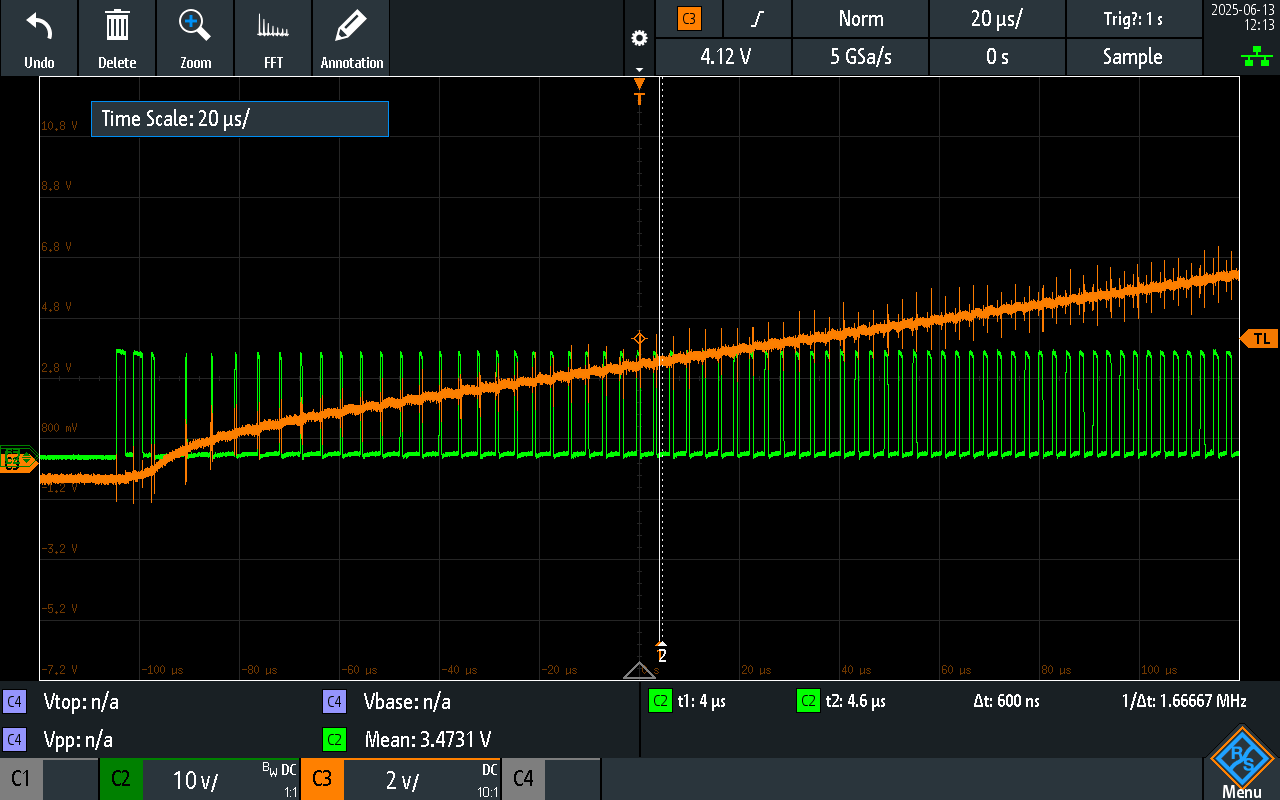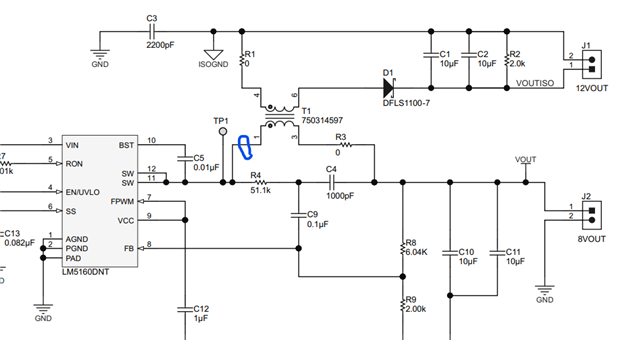Other Parts Discussed in Thread: LM5160, LM5160DNTFBKEVM
Tool/software:
we test the LM5160 EVM board. we can find the PWM signal of chip is stop during power supply start-up; stop time is about 40us;
the peak current value of transformer primary side is about 430mA;
why dose the chip output stop?
- Yellow is PWM(sw pin);
- Blue is output voltage;
- Green is FB pin;
- Red is transformer primary side current;




 where C_LOAD=output capacitance, dv~ Vout, dt=Tss.
where C_LOAD=output capacitance, dv~ Vout, dt=Tss.
